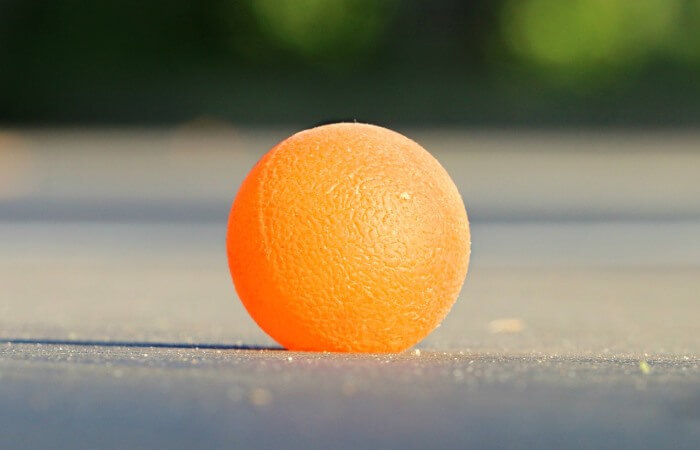Calcium carbonate, characteristics, properties and production, chemical reactions

Calcium carbonate, characteristics, properties and production, and chemical reactions.
Calcium carbonate is an inorganic substance and has chemical formula CaCO3.
Brief description of the calcium carbonate
Physical properties of calcium carbonate
Chemical properties of calcium carbonate
Chemical reactions of calcium carbonate
The application and use of calcium carbonate
Brief description of the calcium carbonate:
Calcium carbonate is an inorganic substance of white color.
The chemical formula of calcium carbonate CaCO3.
Calcium carbonate (calcium carbonate) is an inorganic chemical compound, salt of carbonic acid and calcium.
Practically insoluble in water. Not soluble in ethanol. Easily dissolves in acids to release carbon dioxide.
The calcium carbonate decomposed during the calcination. However, when the pressure of carbon dioxide (CO2) melts without decomposition.
Calcium carbonate – the main component of sediment and rock (limestone, chalk, marble, dolomite, travertine, aragonite, calcareous tuffs), and is part of the egg shell of birds. Natural resources of the huge calcium carbonate is a common mineralfound on every continent of the Earth. Some of the rocks consist almost entirely of calcium carbonate with minor impurities.
Occurs in three crystalline modifications:
– calcite (limestone, chalk, marble);
– aragonite;
of feterita or vaterite.
Calcite and aragonite are stable crystalline modifications. Futurit is the least stable type of calcium carbonate and quickly turns into water either in calcite or in aragonite. Poterit in nature is relatively rare.
Was as white food coloring E170.
Physical properties of calcium carbonate:
| Parameter name: | Value: |
| Chemical formula | CaCO3 |
| Synonyms and foreign language names | calcium carbonate (English).
calcium carbonate (Rus.) |
| The type of substance. | inorganic |
| Appearance | white trigonal crystals |
| Color | white |
| Taste | no taste |
| The smell | odorless |
| Aggregate state (at 20 °C and atmospheric pressure of 1 ATM.) | solid |
| The density of aragonite (state of matter – solid, at 20 °C), kg/m3 | 2830 |
| The density of aragonite (state of matter – solid, at 20 °C) g/cm3 | Of 2.83 |
| The density of calcite (the state of matter – solid, at 20 °C), kg/m3 | 2740 |
| The density of calcite (the state of matter – solid, at 20 °C) g/cm3 | Of 2.74 |
| Decomposition temperature, °C | 900-1000 |
| The melting point of aragonite, °C | 1339 |
| The melting point of calcite, °C | 825 |
| Molar mass, g/mol | 100,0869 |
| Water solubility (25 OC), g/l | 0,013 |
Receipt of calcium carbonate:
Industrial method of obtaining calcium carbonate is the development of its deposits in nature.
In the laboratory, the calcium carbonate obtained by slaking burnt lime and the subsequent blowing off of carbon dioxide.
Calcium oxide (quicklime) mixed with water. The result is a so-called milk of lime (calcium hydroxide).
CaO + H2O → Ca(OH)2.
As the calcium hydroxide dissolves in water a small amount, then after filtering out the lime milk obtained transparent solution – lime water, which becomes turbid by passing through it carbon dioxide (carbon dioxide). The result is calcium carbonate, which precipitates.
Ca(OH)2 + CO2 → CaCO3.
Chemical properties of calcium carbonate. Chemical reactions of calcium carbonate:
Calcium carbonate is the average salt formed by strong base (calcium hydroxide Ca(OH)2) and weak acid (carbonic acid H2CO3).
Aqueous solutions of CaCO3 have a weak alkaline reaction.
Chemical properties of potassium hydroxide are similar to the properties of the carbonates of other metals. So it is characterized by the following chemical reactions:
1. the reaction of thermal decomposition of calcium carbonate the calcination of limestone:
CaCO3 → CaO + CO2 (t = 900-1200 °C).
In the reaction, the formed calcium oxide and carbon oxide (IV). The calcination of limestone is an industrial method of producing carbon dioxide. Technologically this process in industrial implement in special shaft furnaces.
2. the reaction of calcium carbonate and carbon (graphite, coke):
CaCO3 + C → CaO + 2CO (t = 800-850 °C).
In the reaction, the formed oxide calcium oxide carbon (II).
3. the reaction of calcium carbonate and the hydrogen fluoride:
CaCO3 + 2HF → CaF2 + CO2 + H2O.
In the reaction, the formed fluoride of calcium, oxide of carbon (IV) and water. The hydrogen fluoride as a starting material is used in the form of a dilute solution.
4. the reaction between calcium carbonate and hydrogen sulphide:
CaCO3 + H2S → CaS + H2O + CO2 (t = 900 °C).
The reaction produces calcium sulphide, water and oxide of carbon (IV).
Similar reactions occur with other halides.
5. the reaction between calcium carbonate and nitric acid:
CaCO3 + 2HNO3 → Ca(NO3)2 + CO2 + H2O.
In the reaction, the formed nitrate calcium oxide carbon (IV) and water.
6. the reaction between calcium carbonate and carbonic acid:
CaCO3 + H2CO3 → Ca(HCO3)2.
The reaction forms calcium bicarbonate.
7. the reaction between calcium carbonate and bromine acid:
CaCO3 + 2HBrO3 → Ca(BrO3)2 + H2O + CO2.
In the reaction, the formed bromate calcium, water and oxide of carbon (IV).
Similar are the reactions of calcium carbonate and other acids.
8. the reaction between calcium carbonate, carbon oxide (IV) and water:
CaCO3 + CO2 + H2O → Ca(HCO3)2.
The reaction forms calcium bicarbonate. The reaction proceeds at room temperature.
9. the reaction between calcium carbonate and silicon oxide:
CaCO3 + SiO2 → CaSiO3 + CO2 (t ≈ 800 °C).
The reaction are formed by metasilicate and calcium oxide carbon (IV).
10. the reaction between calcium carbonate and titanium oxide:
CaCO3 + TiO2 → CaTiO3 + CO2 (t = 800-1100 °C).
In the reaction, the formed titanate and calcium oxide carbon (IV). The reaction proceeds with fusion of the reaction mixture.
11. the reaction between calcium carbonate, oxide of sulphur and oxygen:
2CaCO3 + 2SO2 + O2 → 2CaSO4 + 2CO2.
The reaction produces sulfate and calcium oxide carbon (IV). This reaction is a method of cleaning gas mixture from SO2.
12. the reaction between calcium carbonate, lead oxide, and oxygen:
4CaCO3 + 2PbO + O2 → 2Ca2PbO4 + 4CO2 (t ≈ 800 °C).
The reaction formed orthoplumbate calcium and carbon oxide (IV). Initially, the calcium carbonate and lead oxide are well mixed with each other. The mixture was heated in the tube to burn in a stream of airfree from carbon dioxide, to srednekraevogo heat (about 800°C). The temperature should not exceed 850°C.
13. the reaction between calcium carbonate and sodium hydroxide:
CaCO3 + 2NaOH → Na2CO3 + Ca(OH)2.
The reaction produces sodium carbonate and calcium hydroxide. The sodium hydroxide as a starting material is used in aqueous solution.
14. the reaction between calcium carbonate and ammonium chloride:
CaCO3 + 2NH4Cl → CaCl2 + 2NH3 + H2O + CO2 (to).
The reaction produces calcium chloride, ammonia, water and carbon oxide (IV). The reaction proceeds while boiling.
15. the reaction between calcium carbonate and of sulphide of potassium:
CaCO3 + K2S → K2CO3 + CaS (t ≈ 1200 °C).
The reaction formed potassium carbonate and sulphide of calcium.
16. the reaction between calcium carbonate and sodium sulfide:
Na2S + CaCO3 → Na2CO3 + CaS (t ≈ 1200 °C).
In the reaction, the formed carbonate of sodium and sulphide of calcium.
The application and use of calcium carbonate:
Calcium carbonate is used in many industries and for domestic purposes:
– for writing on the boards;
– at home for whitewashing the ceiling, painting the trunks of trees;
in the pulp and paper industry – in the manufacture of paper as bleach, filler, and deoxidizer;
– as a food additive in the food industry;
– as filler in the manufacture of plastics, paints, rubber products, household chemicals, etc.;
– in the manufacture of hygiene products (e.g. toothpaste) and pharmaceuticals;
– in medicine;
– the production of silicate glass;
– as filler in the production of putties and sealants,
in agriculture for deoxidation of acidic soils.
Note: © Photo //www.pexels.com, //pixabay.com



